Getting Started With ZESTY CITRUS
Our top citrus plants of the season and tips to grow well

A Beginner's Guide To SPRING BULBS
Plant now for gorgeous spring blooms
Growing The PERFECT HEDGE
Add privacy and personality to your garden

Our top citrus plants of the season and tips to grow well

Plant now for gorgeous spring blooms
Add privacy and personality to your garden


Our new concept store is changing the landscape of garden centres with a number of ground-breaking and interactive features that are a must-see!
Sustainability is at the heart of the design of our store with locally made fixtures that use sustainable timber, solar panels which provide the entirety of the store’s daytime energy, irrigation systems that incorporate water reuse and new plastic recycling initiatives.
With a carefully curated range of seasonal plants, inspirational display zones, a potting up area and plant experts on hand to help you every step of the way , Kings Plant Barn Stonefields is everything you love about Kings, plus so much more.
86 Lunn Ave Stonefields, Behind ASBWe’re proud to be plant-people, but we’re chuffed to find out our customers think we’re as good with people as we are plants. So good that we’ve won our third gold medal in the Reader’s Digest Quality Service Awards. Thank you to everyone who voted for us. We are so pleased we have been able to help so many Kiwis grow well.

Happy autumn! As the temperature drops, we’re ready to embrace the new colours, flavours and growth in our gardens. Autumn is widely known as nature's best planting time, mainly because the soil temperatures are still warm enough to encourage root growth, while there is less water stress on plants in the milder temperatures. This means new plants have a better chance to settle in well, especially when planted directly into the garden.
Autumn is also a special time for Kings, as March marks our 31st birthday. We are so proud of all we’ve achieved over the last three decades and have exciting plans for the next 30 years. We are very grateful for our passionate team that have been a part of our journey, and who love nothing more than helping customers grow well. This year’s birthday celebration will be one you dont want to miss, with instore events, special offers, giveaways, and lots more. Keep an eye on our social for updates.
In this issue of scoop we’ll share our top autumn planting tips on seasonal favourites like hedges, camellias, citrus, lawns, and spring bulbs. This scoop is a little lighter than previous issues, but don’t worry, you can view all our top autumn articles, recipes and grow guides online at kings.co.nz.
Grow well this season, and remember we’re here to help.
The Kings Team

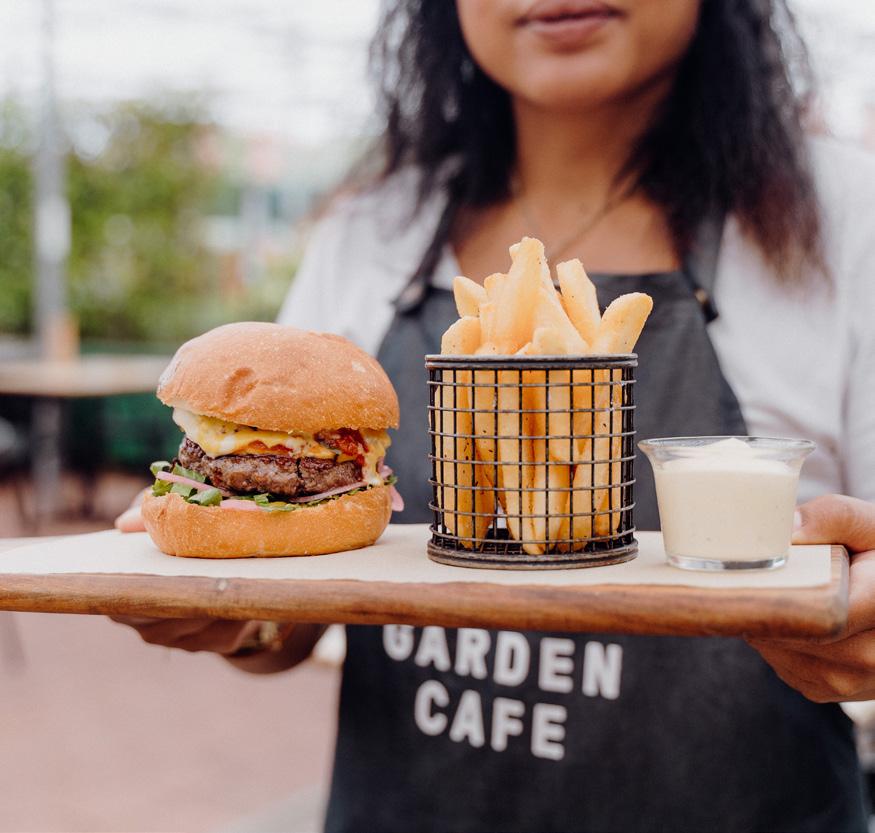
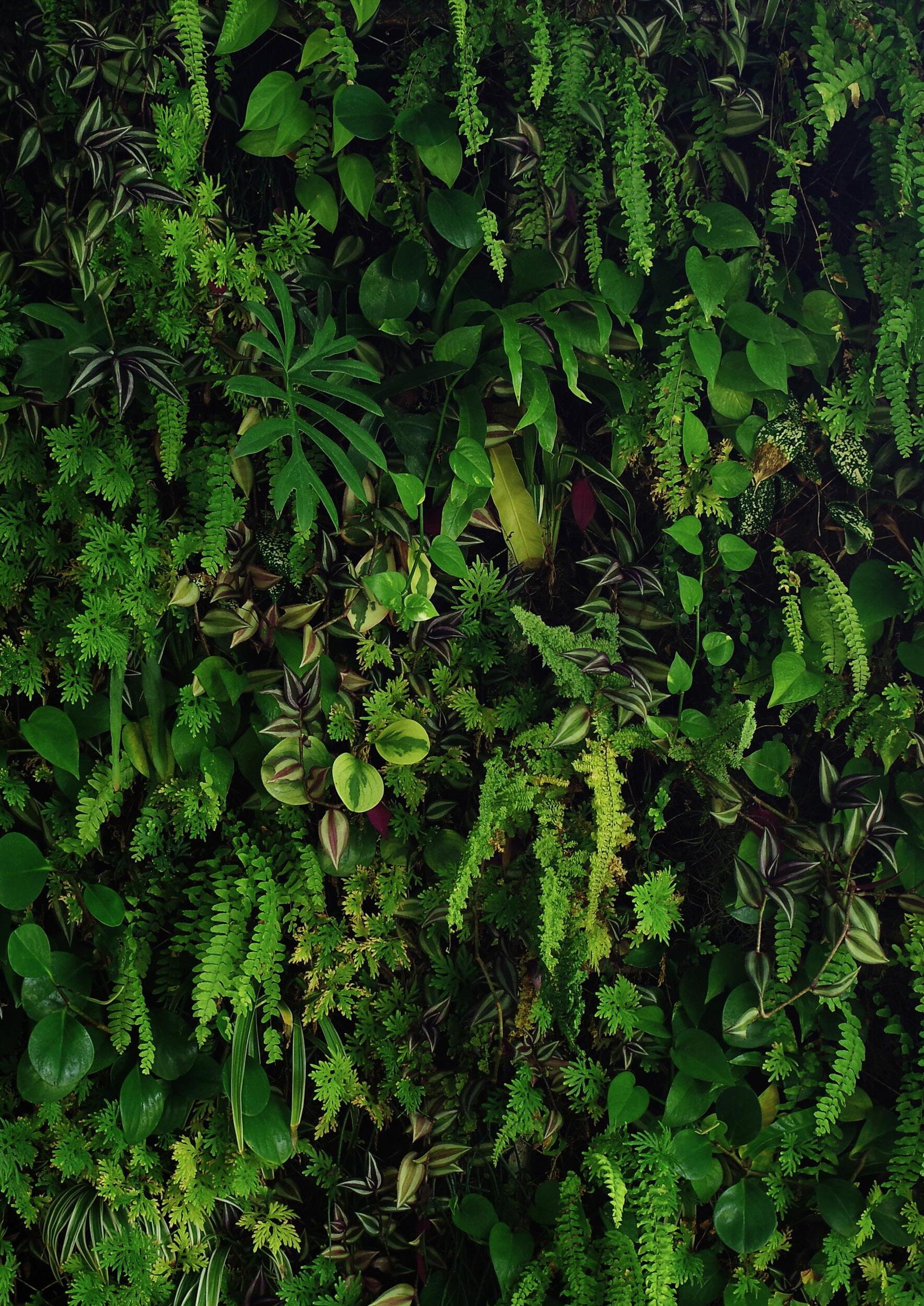
Our garden cafes are the perfect place to catch up with a friend, bring the family for a treat, or refuel your plant shopping. With a delicious seasonal menu, great coffee, kid friendly spaces and outdoor areas set amongst the beautiful greenery of plants, Kings Garden Cafes offer a welcoming space that everyone will love.
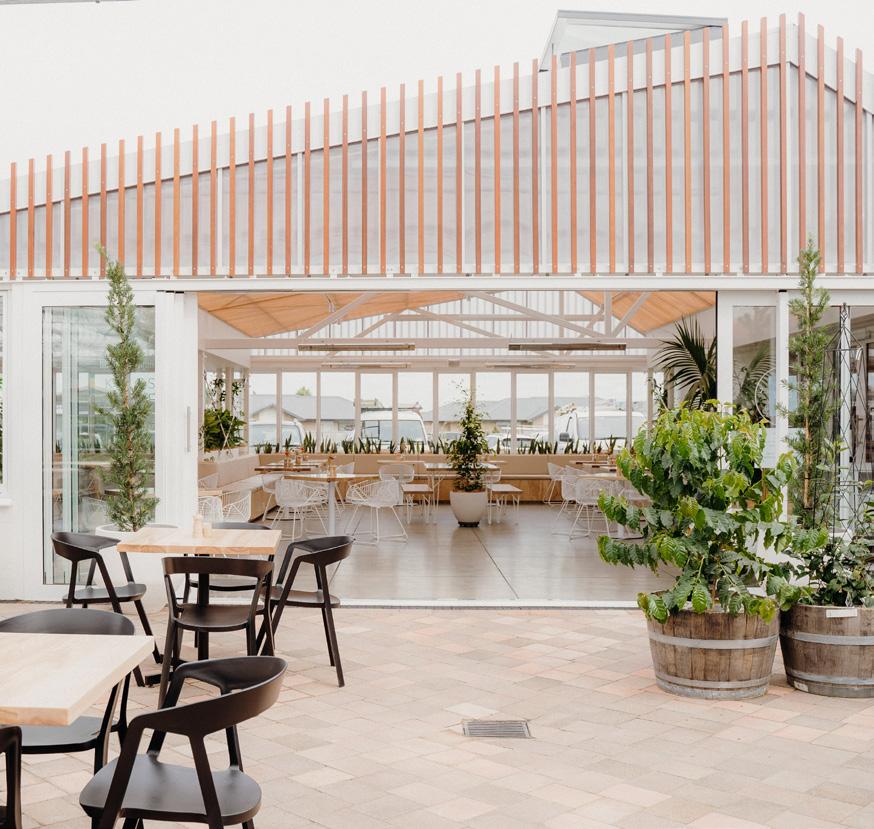



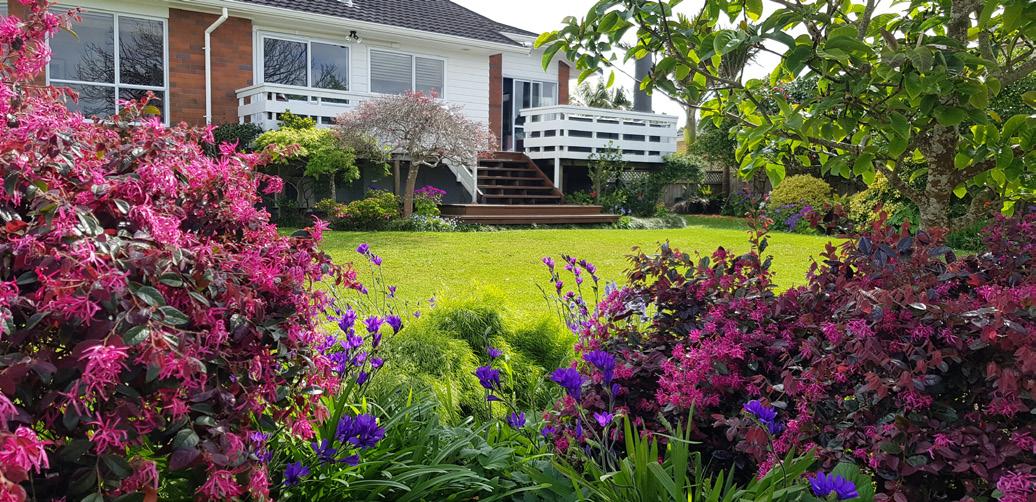


One of my husband’s and my greatest joys and passions is gardening. Our neighbourhood Kings is not only our go-to plant provider, but it is also a stunning place of creativity and inspiration. Throughout the seasons, my husband tends our large vege garden. He grows kale, cabbage, broccoli, tomatoes, a variety of lettuces and more. Beneath our native trees, I enjoy creating colourful flower gardens of impatiens, roses, alyssum and salvia that attract birds, bees and butterflies. On our recent visit, I was inspired to choose clusters of fuchsia-coloured petunias to grow in pots, creating an instant design of bloom and beauty. Thanks to Kings, every year we keep discovering and growing in our gardening adventures.
- Marama, Auckland
We can learn so much when creating a garden. My wife Raewyn and I have loved potting around in our garden for many years. It has been a place to hang out, reflect, observe amazing bird life, entertain and share with others. Extended family croquet and competitive volleyball have created many special memories as well as plant damage! However, the garden still survives and smiles back!
Taking our interest in plants into the classroom has been exciting too. How cool to share the delight of a student observing the pattern in a silver fern frond or passing on the passion when helping students plant their own garden outside the classroom.

Deciding what to remove or prune back has always provided lots of family debates! Using photography to capture the special moods of the garden is a challenging art I also enjoy.
Looking forward to the next lesson out there!
- David, Auckland
Got a tricky plant question? Ask instore or try our online Plant Doctor at plantdoctor.co.nz

Hi Plant Doc,
My dahlias have a white powder on the leaves, how do I fix this and what is it?
- Thanks, Amanda
Hi Amanda,
At this time of the year, powdery mildew can be a problem, infecting various plants including dahlias. The best way to treat this is to spray with Kiwicare Organic Super Sulphur. When watering your dahlias, try and avoid wetting the leaves.
Hey Plant Doctor,
The leaves on all of my rhododendron are grey, do you know what is causing this?


- Ryan
Hi Ryan,
An insect called Thrip is causing the leaves to go grey. Chlorophyll is what makes leaves green, and thrips suck this out of them. The result is silver, grey leaves with lots of brown speckles on the back of the leaf. To treat this issue spray throughout summer and autumn with Aquaticus Bugtrol.
Autumn is a season known for colourful foliage and stunning flowers. As the weather begins to cool down, a huge variety of eye-catching plants arrive into our stores, providing plenty of options to decorate your garden and home. Here are some of our favourites this season.
Chrysanthemums

Chrysanthemums are the ultimate showstoppers in the garden! With their bright colours and easy care nature, they bring joy and beauty to outdoor spaces. Plus, they bloom late into autumn, providing a much-needed burst of life to our gardens during a season when everything else is winding down.
Cyclamen
With their cute, heart-shaped leaves and little flowers, cyclamen have a special place in our hearts. Their stunning flowers in vibrant shades of pink, red, and white are a must-have for any garden in the cooler months. Cyclamen are also incredibly low maintenance and grow well in the shade.
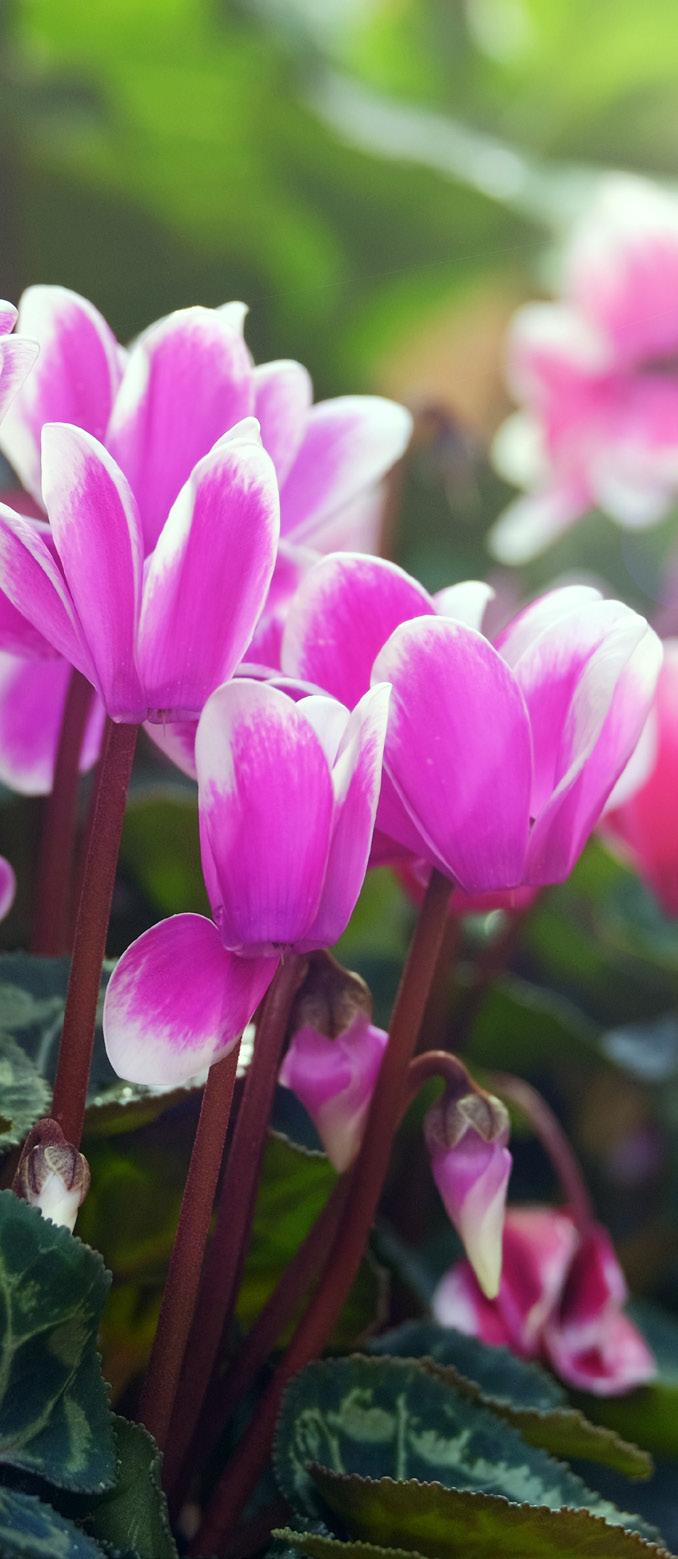
Hebes
These versatile natives bring a fresh, stylish vibe to any garden with their lush foliage in green, grey, and purple and their pretty blooms in pinks, purples, and whites. We love how low maintenance they are, which makes them perfect for both seasoned and beginner gardeners alike.

Avocados
You had us at guacamole! These amazing trees not only provide us with delicious, creamy avocados, but they also bring a tropical vibe to the garden. With their lush, green foliage and all year round fruiting (once fully established), what's not to love? Plus, they're surprisingly easy to care for and can be grown in a range of climates.

Gardenias
The sweet scent of gardenia flowers is sure to turn heads, and the blooms themselves are absolutely stunning. Whether you plant them in pots or beds, gardenia add a touch of sophistication to your outdoor space. These plants can keep blooming for months on end, giving you an endless supply of gorgeous flowers and divine scent.

Camellias

Prized for their lush glossy evergreen foliage and long-lasting blooms from autumn, camellias are perfect as a feature plant, or as a thick hedge all year round. There are two main species of camellia grown in New Zealand. Japonica have larger flowers, and are best in shade, whereas sasanqua are best in full sun to part shade.
Join our Kings community to stay up to date with the latest gardening news, monthly giveaways and be the first to know about our exciting new arrivals and special offers.

KingsPlantBarn
KingsPlantBarnNZ
Spring bulbs are the ultimate way to add a pop of colour and fragrance to your garden or patio, and now is the perfect time to get planting. Trust us, there's nothing quite like the feeling of seeing those first shoots peek through the dirt, marking the start of spring. Plus, planting and caring for spring bulbs is a breeze! So, here's all you need to know to add a little bit of magic to your garden this season.
Bulbs in the Ground
Planting spring bulbs in the ground is easy! Just make sure to plant them in soil that's well-draining and rich in organic matter, or in a special bulb mix. To give your bulbs an extra boost, mix some compost, pumice sand, and gypsum into the soil. And, if your area tends to get a bit soggy, make sure to plant them on a slight mound to keep them dry!
Bulbs in Pots and Containers
Choose a pot that's big enough for the bulbs to be planted at the perfect depth and spacing. Plant into a bulb mix, and ensure that your pots are well-draining and that the bulbs won't be sitting in water-logged soil.
If you're looking for some beautiful cut flowers, plant your bulbs in shadier areas, they'll have longer stems!
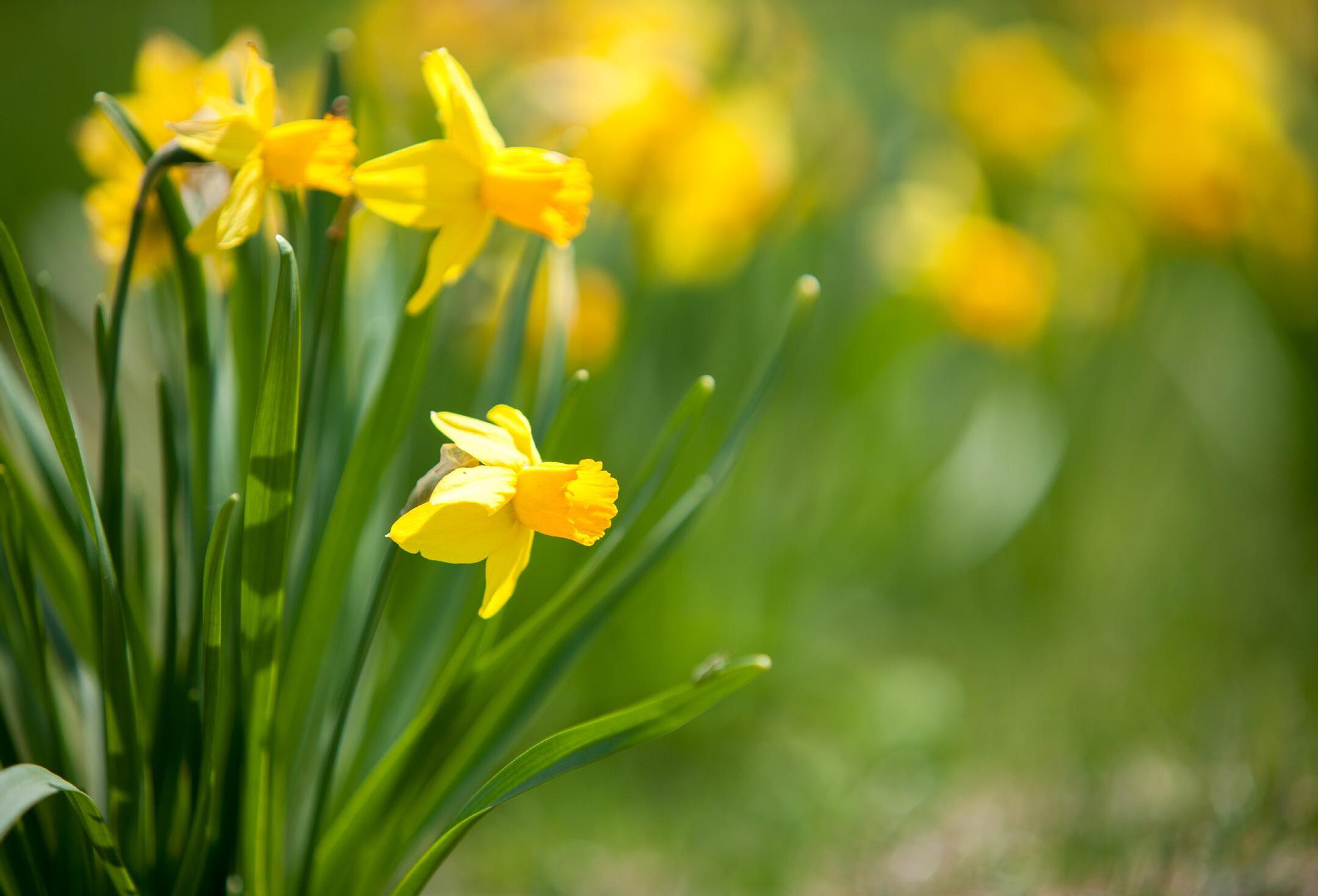
Ranunculus
These ornate, colourful flowers are perfect for adding a touch of elegance to your garden. Before planting, give your corms a little spa treatment by soaking them deeply in water for two hours. If you want longer stems, give them a spot with a bit of shade. Water well until the sprouts emerge, and then keep the soil slightly moist.
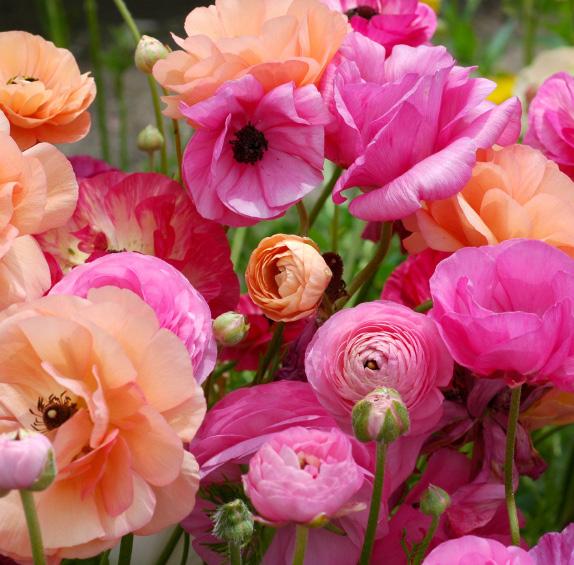

Available from: late January
Plant: Jan–April
Position: full sun
Depth: 3–4cm
Spacing: 6–8cm
Hyacinths are the ultimate fragrant, colourful addition to your garden. If you want the best out of your hyacinths, chill the bulbs in the fridge for 4-6 weeks before planting them in the winter to prevent malformed flowers. When the foliage dies back, lift the bulbs and keep them in a paper bag in a cool, dry area so they can be replanted next season.
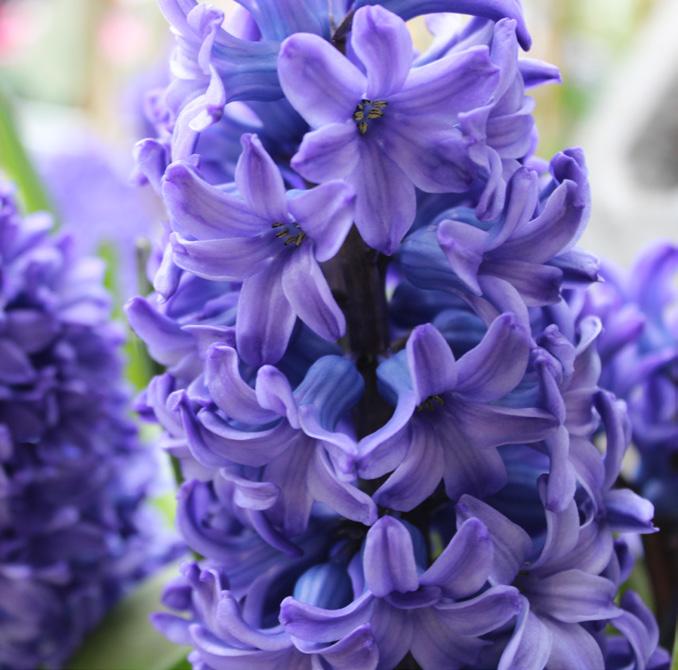
Available From: late January
Plant: March–April
Position: full sun
Depth: 5–10cm
Spacing: 8–10cm
Anemones are the perfect pick for a pop of colour in your garden! These easy-to-grow beauties have colourful flowers that will brighten up any space. For a longer vase life, pick them a couple of days before their flowers open. Anemones offer their best blooms in their first year but will continue to bring colour to your garden year after year.

Available from: late January
Plant: Feb–March
Position: part shade
Depth: 3–4cm
Spacing: 6–8cm

With a large range of varieties to choose from, these fast-establishing beauties will fill out your garden in no time. Plus, they're arguably the easiest bulb to grow, making them a great choice for gardening beginners. Just remember to protect those precious sprouts from those pesky slugs and snails with Quash in the winter, and watch as they flourish.
Available from: early January
Plant: Feb–April
Position: full sun
Depth: 8–10cm
Spacing: 10–12cm
Freesia

Popular for their sweet scent and colourful flowers. As they sprout and establish themselves, they grow little extra bulbs. Once the blooming is done, the original bulb dies, leaving the new bulbs to take over and bring colour and fragrance to your garden next year. Remember to plant with the pointy part of the bulb facing upwards!
Available from: early February
Plant: Jan–April
Position: full sun
Depth: 5–6cm
Spacing: 8–10cm
These bulbs arrive in stores around late March, but before you plant them, give them a little "chill time" in the fridge for a few weeks, and plant in late May. This will ensure they bloom beautifully in the spring. Just make sure to keep them dry while chilling! Plant them in a spot where they'll get some shade to keep those blooms looking fresh for longer.
Available from: late March
Plant: March–April
Position: full sun
Depth: 5–8cm
Spacing: 8–10cm
Autumn is the best time to plant hedges, allowing the plants to get settled in before winter. Growing hedges is a fun way to add privacy and personality to your garden, so don't be afraid to get creative and make your hedging unique!
Corokia
A fun and unique New Zealand native available in a variety of colours, including bright greens, silver, and even chocolate foliage. Space 30-50cm depending on variety.
Griselinia
A glossy, evergreen plant that's perfect for providing privacy. Pruning will determine its height. Space 75cm apart.
Pittosporum
With loads of different varieties to choose from, these native plants are great for screening and are best grown in full sun. Space 75cm apart.
Buxus


A small-leaved, tightly compact evergreen plant that's ideal for defining garden bed edging and creating topiaries. Space 30-60cm apart.
If formal hedges aren't your style, try growing a hedgerow made up multiple of different species. This can help bring more personality and variation to your property!

 Corokia
Griselinia
Pittosporum
Buxus
Corokia
Griselinia
Pittosporum
Buxus

If you're looking to add some privacy with a lush hedge but also want occasional bursts of colour, camellias are the way to go. With their thick, glossy leaves and stunning blooms that appear from autumn to spring, they're sure to turn heads.
Most camellias prefer to be semi-shaded, like on the southwest side of your house or under some trees. But don't worry, camellias can handle a little sun, especially the sasanqua varieties. Just make sure to give them some protection from those strong rays and harsh winds while they're getting established.

When it comes to soil, camellias grow well in free-draining soil that is rich in organic matter. To give your soil some love and improve its organic content, add Kings Compost, Kings Sheep Pellets and some Kings Azalea, Camellia and Rhododendron Food, mixing together well. And if you want to grow your camellias in containers, use Kings Container Mix, which has added water storage crystals to keep them hydrated.
Setsugekka
A classic and popular sasanqua cultivar that grows to 2.5m x 2m and is perfect for hedging. With masses of delightful white flowers in autumn and winter, this camellia will be sure to have your garden guests talking.
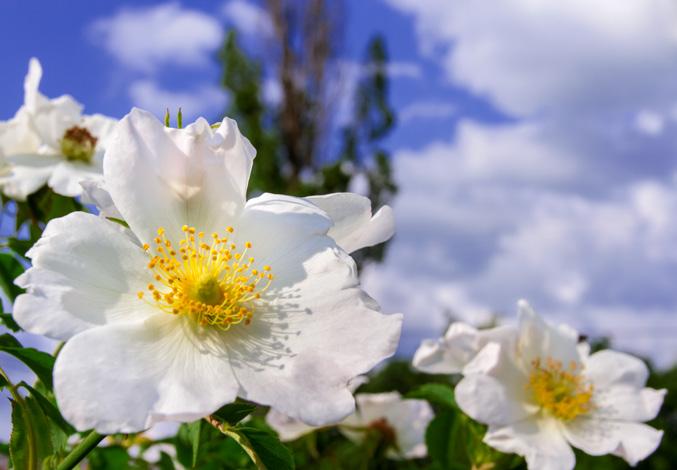
Plantation Pink
This sasanqua camellia has an upright growth habit and produces frilly early pink-blush blooms from March to June. The single to semi-double flowers emit a sweet scent and this camellia can grow up to 2.5m tall.

Nuccio’s Jewel
This japonica camellia has beautiful white petals with a flush of orchid pink and produces large, showy blooms from winter to spring. Grows to 1.5m x 1m.
Yuletide
A sasanqua camellia that produces masses of eye-catching, red blooms with bright yellow stamens from winter to early spring. It has a compact growth habit, growing to 2m x 1m.
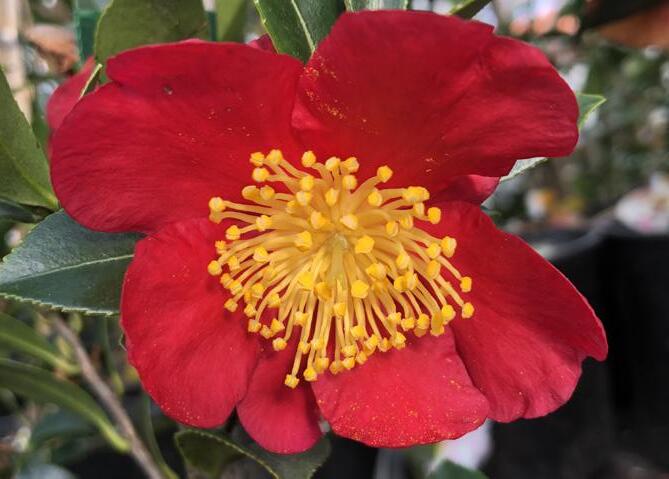
When it comes to positioning your hedge, take notice of how far apart you are planting your trees. If you want to see results faster, plant them closer together, or if you want to take your time, plant them further apart.
Before you start planting, make sure your soil is in tip-top shape by digging in some Kings Compost. If you're using larger plants, don't forget to stake them while they establish their roots. And if your soil is clay-based, adding a bit of Gypsum Claybreaker will help out even more.
When it comes time to plant, pay attention to how the plant is already growing. Plant the bushier sides facing away from the next plant so that your hedge fills in quicker. And don't forget to give them a good deep watering when you're finished.
A great means to break up clay-based soil over time, helping plants thrive.
8kg $26.99

Use our fantastic slow-release fertiliser when planting your hedge that will feed the plants over the next two years.
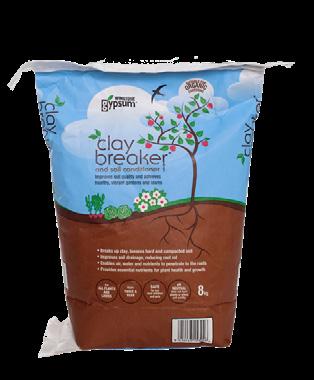
700g $17.99
Trim your hedges regularly to encourage healthier, thicker and more symmetrical growth of your plants.

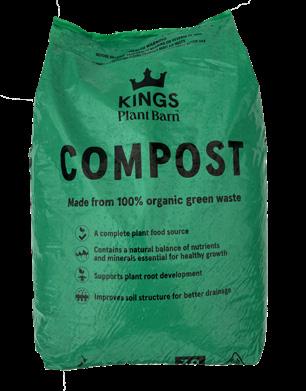
Mix into your original garden soil for organic nutrients, as well as helping to improve drainage.
30L $6.99
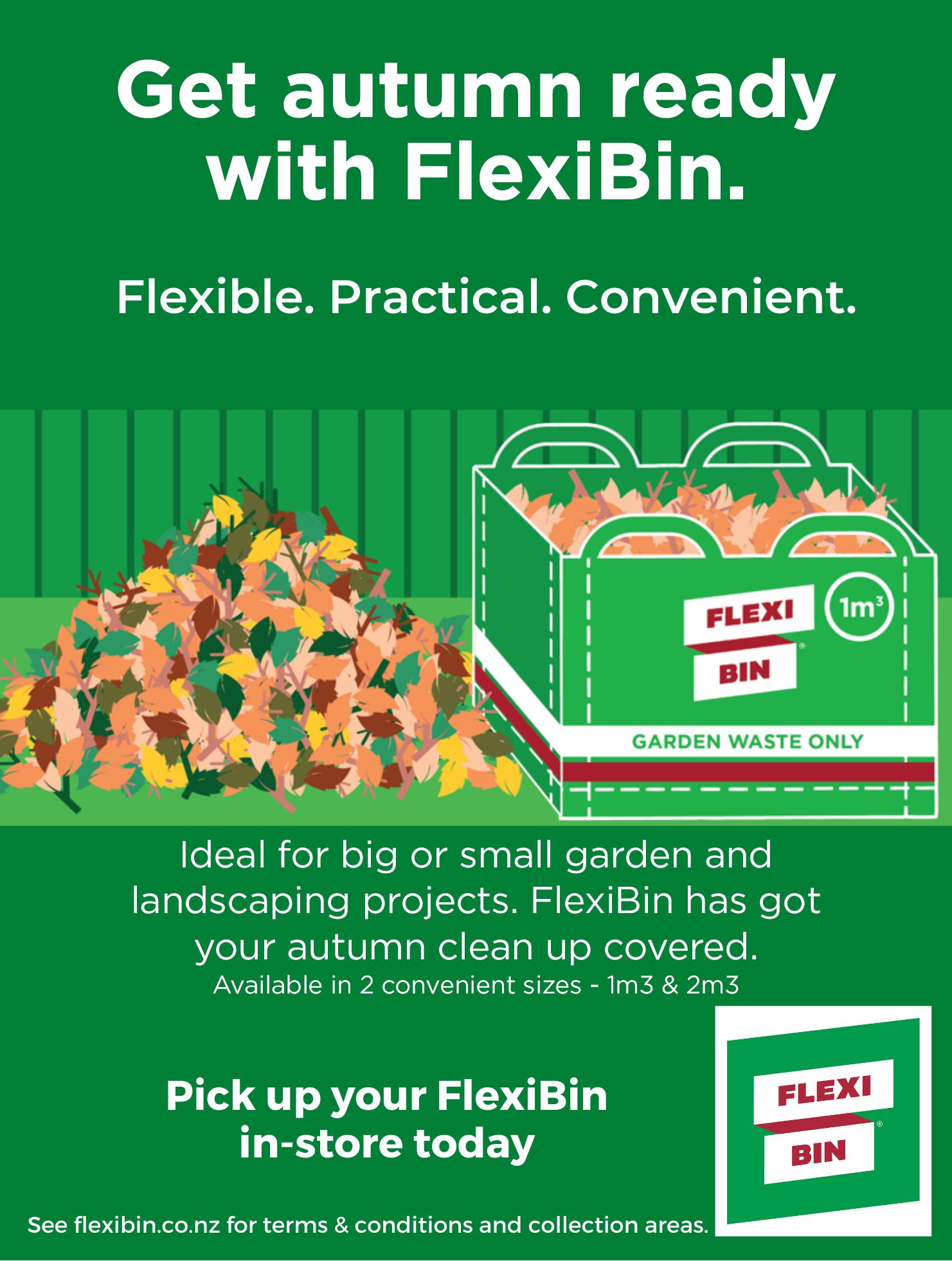
A beautiful lawn is a quintessential Kiwi dream. With a little planning and some simple maintenance, your lawn will be the envy of your neighbours all year round. Whether you're planting a new lawn or sprucing up an existing one, now is the best time to get started.
1. Clear Weeds
First things first, let's get rid of those pesky weeds. The best way to ensure a weed-free patch for planting is to spray a broad-spectrum herbicide, such as Yates Zero. This will kill any existing weeds without leaving any residue in the soil that could harm your new lawn. After the weeds have died and browned off (this can take 2-3 weeks), rake away the dead foliage and remove any larger stones or debris from the area. Be careful not to disturb the soil too much, as this can encourage buried weed seeds to germinate.
2. Preparing to Sow
Next, it's time to prepare the soil. Smooth out any uneven spots, remove any medium to large rocks, and break up dirt clods. If you have clay soil, adding granular gypsum can help improve the soil structure for easier maintenance in the long run. Finally, spread a layer of Living Earth Lawn Mix at a depth of 5cm to create a fine seed bed.
3. Selecting Seed
When it comes to selecting seed, there are many options to choose

from. Consider the location of your lawn and what you want from it. Do you want something fancy and fine? Something tough enough to withstand energetic kids and dogs? Or does your lawn need to cope with shade or dry sunny banks? Choosing the right seed from the start will save you time and money.
4. Sowing Lawn Seed
Now it's time to get sowing! Follow the instructions and suggested rates on the packaging and start spreading your seed. A tip to ensure even coverage is to divide your seed into two portions and spread half out while moving north to south and then spread the other half out east to west. For best results, try using a hand-spreader. After sowing, lightly scatter another layer of Living Earth Lawn Mix or gently rake to cover the seed.
Caring for your new lawn is key to keeping it looking great. For the first three months, only feed with a fertiliser that is specific for young grass to avoid

burning the roots. Water well until the grass has become established. When mowing for the first few times, allow the grass to grow 4-5cm tall and then set the mower to take only the tips of the leaves off.
If you have bare spots in your lawn, don't worry! Simply loosen the soil with a fork, clear away any weeds, add a thin layer of lawn mix, and an application of Burnet's EzyStart Lawn Starter to the area. Sow seed and treat it as a new lawn.
A thick, healthy lawn is the best defence against weeds. A common mistake is mowing the lawn too short, which can weaken the lawn. If weeds are a problem, try mowing at a higher setting or weeding by hand. If you have a more serious problem, use Yates Weed 'n' Feed, an easy to apply fertiliser and selective herbicide which can be attached to a hose and used while watering.

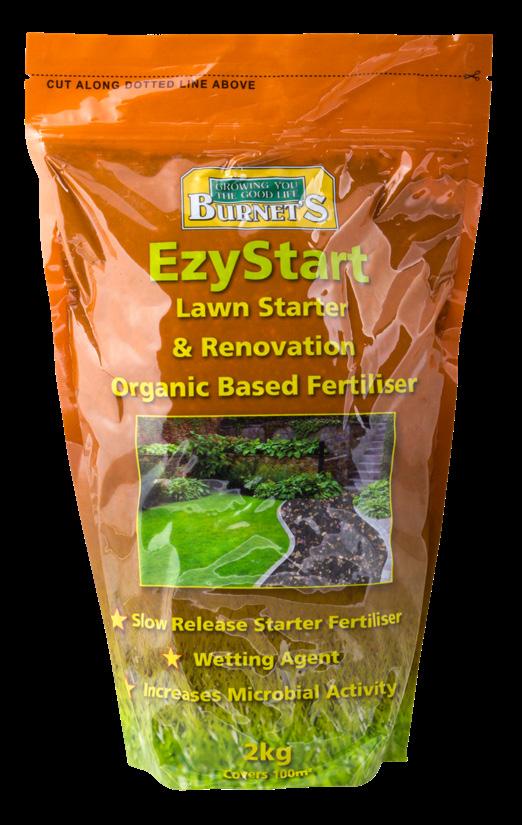







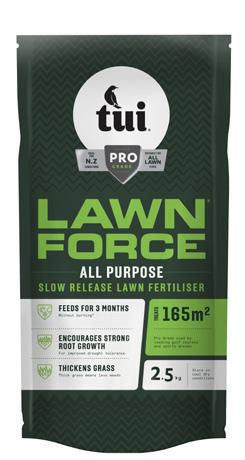



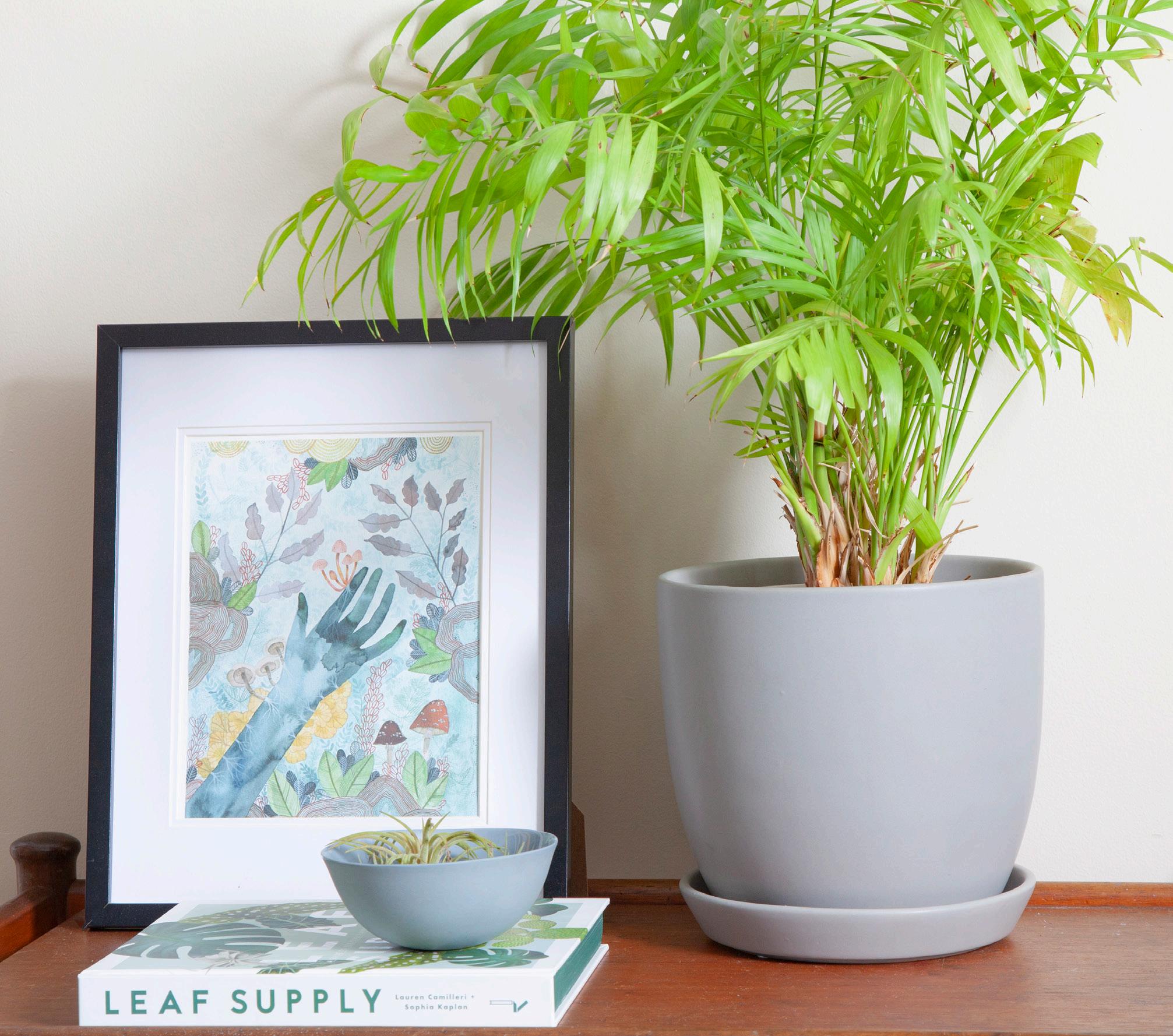
As the heat of summer starts to subside, it’s time to make some changes to the way you care for your indoor plants. With cooler temperatures and lower light levels, many plants will need a little less love than they did during summer. A change of season is also a good time to try some new styling techniques to give your home a fresh new look. Here are our top indoor plant tips to keep you growing well this autumn.
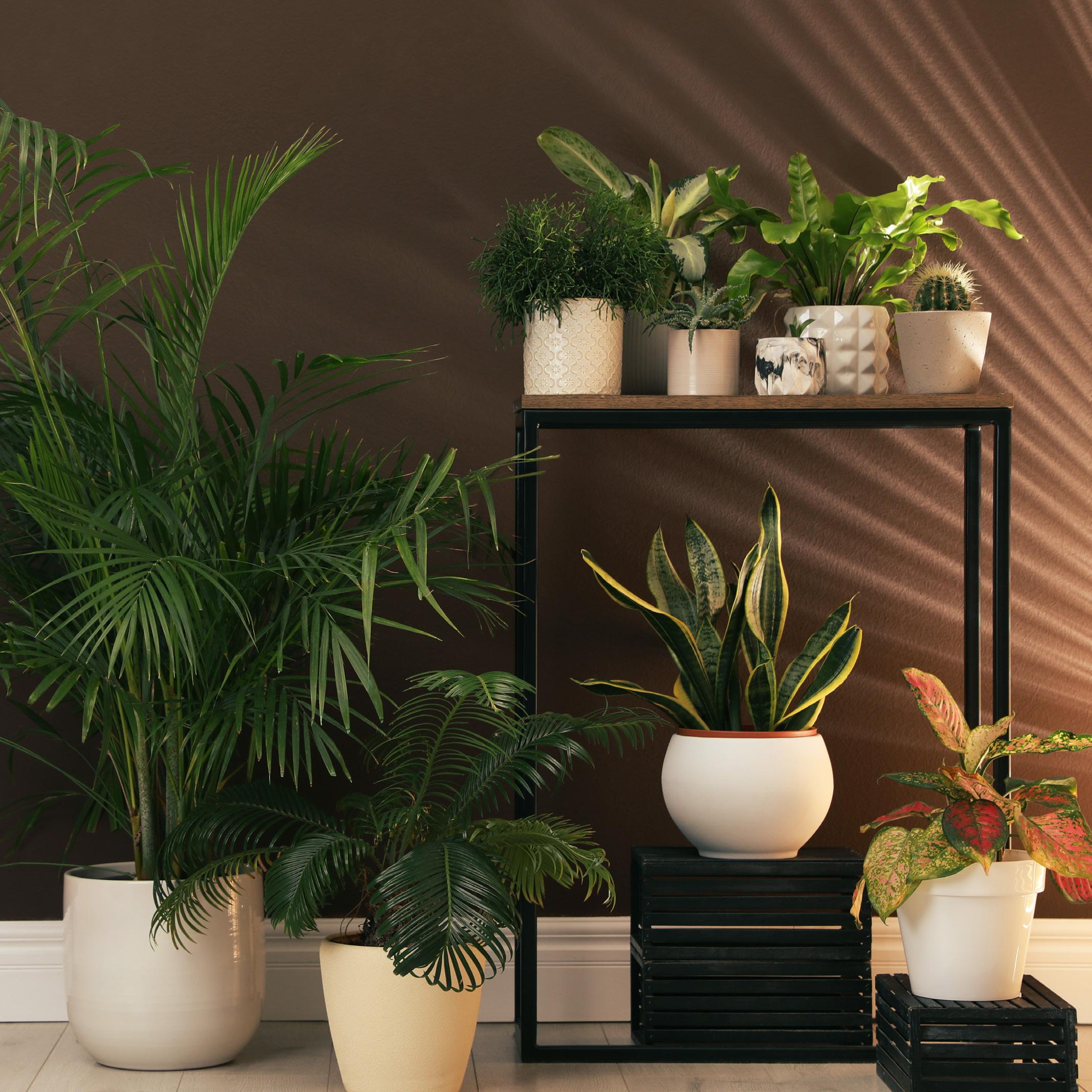


Moving your plants to a new spot in your home when the seasons change isn’t just recommended to adapt to the changing temperatures and light conditions, it’s also a good chance to give your rooms a fresh new vibe. Just remember to keep an eye out for signs of stress once you’ve moved your plants to their new home - they’re usually pretty good at letting us know if they’re not happy. Often plants that haven’t been moved around for a while will thrive once they find their perfect spot, so don’t be afraid to try a few different areas of your house until it feels right.
It’s easy to get used to that empty corner in your lounge or bedroom, but it’s the perfect spot for a large feature indoor plant like a fiddle leaf fig or monstera. If you’re after something a little more subtle, try grouping a few small to medium sized plants at varying heights using plant stands.
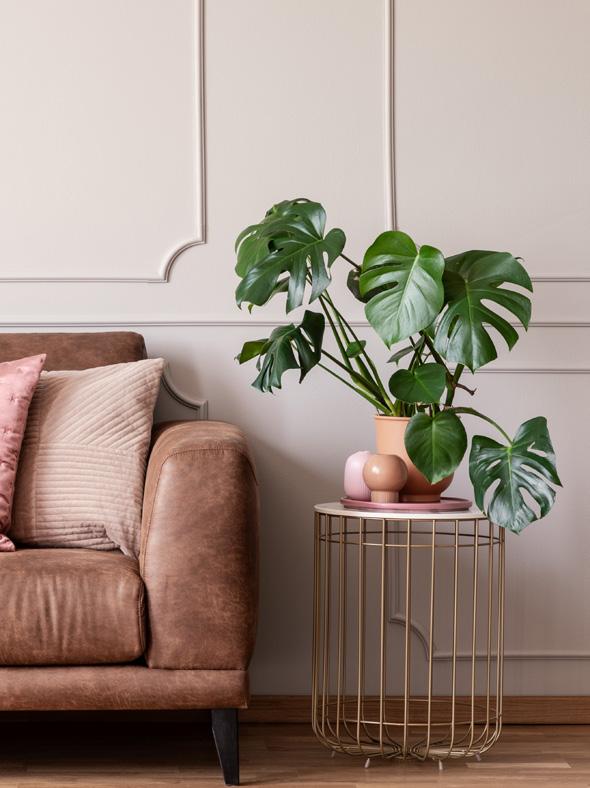
Coffee Tables
Coffee tables are usually the centrepiece of a living room, and with the addition of a few of your favourite plants, can create a whole new feeling of zen. We suggest changing a few of your cover pots to incorporate the earthier tones of the season like terracotta, burnt orange and wooden textures. Even a few small decorative additions like candles, jars and vases can make a big difference.
Bedrooms
Often the most neglected room in the house, but one where we spend most of our time, adding some greenery to your bedroom will instantly make the space feel more relaxing. Choosing the right plants can even help you sleep better, like the air purifying ZZ or peace lily. If you have a smaller bedroom, try a kentia palm or strelitzia (bird of paradise) which will give you height without taking up too much space.
Bathrooms
Even the most basic of bathrooms can be transformed into a spa-like sanctuary with the help of some moisture-loving plants like maidenhair ferns and moth orchids. If you’re low on light, don’t worry, plants like snake plants or ZZs will still thrive (and require very little watering).

Early autumn is the perfect time for any last-minute repotting. Choosing the right soil is key, so go for a well-draining option like Kings House Plant Mix. And while you're at it, give your plants a little haircut by snipping back any leggy growth.
Watering
As the temperatures cool down, our watering routines need to be adjusted accordingly. Certain plants like peace lilies, monstera and ficus can hold out for a while without water. And, no need to worry about watering if the soil is still looking a little damp, we don't want to give them too much of a good thing and cause root rot. On the other hand, our ferns, fittonias, and carnivorous plants prefer to stay slightly moist.

With autumn comes shorter days and a change in sunlight position! That means, our indoor plants may need to find a new spot to call home. But don't worry, it's all part of the fun of being a plant parent. Make sure to close windows at night to prevent any cool drafts from sneaking in and giving your tropical plants the chills.
Kings House Plant Liquid Food

A complete feed with all the essential nutrients house plants need to grow well.
500mL $13.99
Kings House Plant Mix
Specially formulated for indoor plants. It also contains slowrelease fertiliser.

10L $12.99
With the cooler weather, your house plants’ growth will slow down and many of them will be going into a cosy little dormancy period. Just think of it as a plant vacation! They don't need much food during this time, so give them a little break from fertilising and let them recharge. But don't worry, they'll be back to their lush and vibrant selves in no time!


Groconut
Plants fed with coconut water will be denser with bigger leaves and healthier root systems, 100% naturally.
45g $19.99

Citrus are a popular choice for many gardeners as they not only look good in your garden, but they also bring a burst of flavour to your kitchen. From juicy oranges to tart lemons, the sweet and tangy taste of homegrown fruit will have you hooked.
When planting your citrus, choose a spot that gets at least six hours of direct sunlight each day and is protected from chilly winds. If you're planting in the ground, citrus prefer well-drained soil that's rich in organic matter. Mix Kings Compost and Kings Sheep Pellets into the soil to give it an extra boost. If you're planting in a container, use Kings Container Mix, which includes water storage crystals to keep the soil moist.
Watering your citrus trees is crucial, especially in the first year. Give them a slow and steady soak to allow the water to reach the roots. Feed with Kings Citrus & Fruit Tree Food in spring and repeat monthly through autumn. A monthly dose of Aquaticus Organic Garden Booster from spring through autumn will encourage root growth and increase microbial activity in the soil. And don't forget to mulch with
Living Earth More than Mulch to keep weeds at bay and retain moisture in the soil.
Growing citrus does take a little patience as it might be a few years before your tree bears fruit. Opt for a larger grade plant if you want to pick your own fruit a little sooner.

The great thing about citrus is you can never have too many. There are so many varieties that all have their own strengths, flavours, and secret culinary purposes. Here's a few of our favourites that are popping up in stores this season.

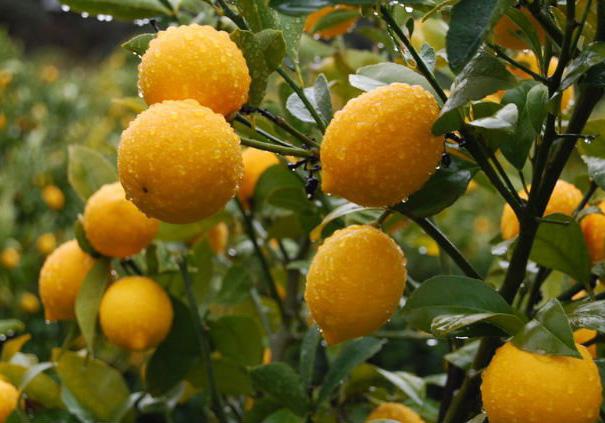
Perfect for home gardens. Once established, meyer lemons will produce an abundance deliciously sweet lemons nearly all year round.

A vigorous tree which produces rich, seedless, acidic fruit right in your backyard. Perfect for those afternoon cocktail parties.
An amazing variety which produces heavy crops of oval-shaped, sweet seedless fruit with a bright-orange rind. A must-have for any citrus orchard.

An early-ripening satsuma-type mandarin. Awesome for lunchboxes with its easy-peel skin and juicy fruit. Mihos will never disappoint!

A highly sought-after plant that is hard to come by, known for its rounded, sweet and spicy fruit that are amazing for preserves and marmalades. A great option for growing in containers.
In the first year of your plant fruiting, we recommend removing all the fruit to help your young tree establish a strong root and branch structure. Citrus trees can be heavy croppers and removing about 1/3 of the crop will result in improved fruit quality and prevent biennial bearing (setting fruit every two years).

With proper planting, watering, and feeding, you can enjoy the fruits of your labour for years to come.
If you need extra help along the way, ask one of our plant experts instore.
Lemon Meyer Mandarin Miho Lime Bearss Kumquat Meiwa Orange Navelina

Carefully cover one side of the card paper with glue, and place your leaves in a fun pattern.




Glue the edge of card paper to the other side to form a ring shape. Let the leaves and crown dry before wearing your crown!





Pin me to the wall!

Fruit
Start preparing to sow your lawn. Rake up leaves and weeds and create a smooth and level surface for newly sown seeds to thrive. Spray weed killer to remove weeds, but remember not to sow new seed at least three weeks after weeding. Patch any bare areas of your lawn now. Water any newly sown lawn daily until lawn seed has germinated.
Enjoy the last of your pip and stonefruit harvest and rake up any rotting fruit on the ground for the compost bin.
Once your passionfruit vine has finished fruiting, prune it back and feed with Kings Citrus & Fruit Tree Fertiliser watered into the soil. Spray your vine with Aquaticus Bugtrol to treat any signs of passionvine hopper or mealy bug. Feed your citrus trees with Kings Citrus & Fruit Tree Fertiliser and spray with Grosafe

FreeFlo Copper to protect from scale and verrucosis. Boost your feijoa crop yield and enjoy a longer harvest season by planting two different varieties that fruit at different times. You'll be able to enjoy fresh feijoas for longer.

Prepare your veggie beds for new crops by turning over the soil and adding Kings Compost and Kings Sheep Pellets. It's time to start planting your winter veggies. Stagger them by planting some seedlings now, and the rest over the course of autumn. Winter favourites include beetroot, parsnip, radish, kale, broccoli and cabbage. Sow seeds! Parsnips, leeks, spinach, silverbeet, broccoli, cauliflower and brussels sprouts. Remember to only transplant them to the garden when their stems have at least two sets of leaves.
If you’re not going to plant veggies for a season, plant lupin, mustard or oats for green manure to replenish nutrients in your soil in preparation for your next planting season.
Marchthe month when summer plants are soaking up their final rays of sunshine and fruits are at their juiciest peak. It's the perfect time to get your gardening gloves on and get to work!
Feed your plants with our fast-acting liquid fertiliser for optimal plant health. from $13.99

Flowers and perennials
Refresh your containers and pots with bright annual colour by planting salvias, marigolds, petunias, violas and alyssum.
As perennials start dying away prune back to old growth. If planting new season perennials choose from chrysanthemums, asters, and mini cyclamen. It’s time to plant spring bulbs, with a wide range now instore including freesias, ranunculus, anemone and daffodils. Feed with slow-release Kings Bulb Food at time of planting. If you’re planting tulips or hyacinths, they need to be chilled in a paper bag in the fridge for 4-6 weeks before planting. Give your flowers a mid-season pick-me-

up by deadheading those tired blooms and fuelling them with Kings Fast Food!
Indoor plants
Give your indoor plants their seasonal liquid feed with Kings House Plant Food.


March is your last chance to repot indoor plants before the weather gets too chilly.
An organic insecticide that can be used to control a broad range of insects and also helps protect plants from various fungal diseases. 275ml $22.99
Trees and shrubs
It's the perfect time to start planting hedging plants like eugenias, griselinias, or corokia to get them established for next year. Remove and replace any spindly old shrubs. Before replanting refresh the soil with Kings Compost mixed with Kings Sheep Pellets. Dig in any remaining summer mulch around the base of your trees and shrubs to add extra nutrients to the soil.
General tasks
Time to give your hedges a haircut! Prune back and shape established eugenia, griselinia, pittosporums, and corokia. Clean up your garden as summer perennials start to dieback. Wait until they turn brown, then snip them off. Adding a layer of mulch around your hedges and shrubs will keep weeds at bay. Check on your plants regularly, as early detection is the key to keeping pests and diseases away.
Grow well with these
The perfect mix which is crafted with everything you need for successful lawns.
Aquaticus Bugtrol Kings Fast Food Living Earth Lawn MixFlowers and perennials Add some colour to your garden with potted flowers like calendula, alyssum, poppies, viola, and pansies in pots and hanging baskets. If you’ve chilled your tulips and hyacinth bulbs for 4-6 weeks, you can plant them now. Chilling these bulbs in a paper bag in the fridge before planting encourages better blooms come spring. Deadhead roses once flowering comes to an end.

Fruit Figs are here! Grow them in the ground or pots, but don't forget to water them well to avoid dry, fluffy fruit. If you haven't already, give your fruit trees a boost with Kings Citrus & Fruit Tree Fertiliser. Harvest feijoas as they ripen and remove any fruits infected with guava moth off-site instead of composting.

Veggies
Get your winter veggie garden underway! Plant seedlings of leeks, spring onion, lettuce, cauliflower, broccoli, spinach and beans. Stagger planting for a longer harvest. Don't let heirloom seeds go to waste! Dry them on a sunny windowsill and give them a proper label with their variety and date. Give your still-producing beds some love by digging in Kings Compost and Kings Sheep Pellets.

April's shorter days are still warm, so it’s a great time to tidy and nourish your garden in preparation for winter. The temperatures can start dropping quite quickly, so be prepared and keep a close eye on your garden.
Feed your established lawn and kill off any broad-leaf weeds. Spray, attached to the hose, on a sunny day. From $26.99
Lawns
Get rid of weeds in your established lawns with Yates Weed 'n' Feed. Remember not to sow new lawn seed for at least 3 weeks after weeding. Evenly apply Kings Lawn Fertiliser to existing lawns and water in well. Mow less as the days start to get shorter

Indoor plants Finish taking cuttings for propagation, as there is a lower chance of survival when it starts to get colder. Reduce watering as temperatures cool.

Sow green manure cover crops such as lupin and mustard to reintroduce nitrogen back into the soil, and keep weeds at bay over winter. From $9.99
Kings Azalea, Camellia, Rhododendron Fertiliser

A formulated plant food containing nutrients for healthy growth and prolific flowering in acid-loving plants. 900g $8.99

Trees and shrubs
camellias! They love full sun to part shade, depending on the variety, and make an attractive hedge flowering in Autumn to early spring.
Plant new season
Feed with Kings Azalea, Camellia and Rhododendron Fertiliser.
Time to plant those hedges while the soil is still workable! Eugenia, griselinia, and pittosporum are great for medium to large hedging, while corokia and buxus are perfect for smaller, well-maintained spaces.
General tasks
Take out any spent annual flowers, replacing them with autumn and winter annuals found in our potted colour and seedling ranges. Clean out bird baths as they will have been regularly used over the late summer period. If you have any flax or cabbage trees on your property, pull or cut off the old, damaged or dead leaves, to prevent them from clogging the lawn mower.
Grow well with these
APRIL ESSENTIALS
Flowers and perennials
Potted colour this month includes white alyssum, calendula, pansies, stock, primula, polyanthus, viola, and sweet peas. Brighten your winter with the hardy and lovely cyclamen, best grown in shaded areas in pots or flower beds.
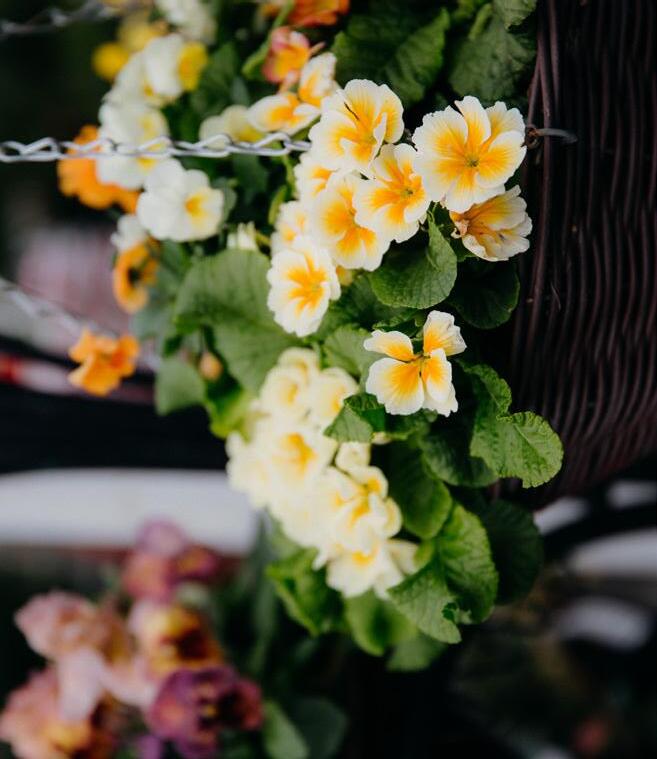
Hellebores will bloom sweetly for you year after year, just plant them under trees now. Plant your favourite spring bulbs into the garden and pots, ensuring they have welldraining soil. Replant hanging baskets with winter colour, and feed with Kings Fast Food or Kings Sheep Pellets once a month.


There’s still time to plant out feijoas, avocados and citrus. Tidy up your strawberry beds and start preparing for new plants arriving in winter. Prune grapevines once all the leaves have fallen. Start planning your urban orchard now, as deciduous fruit trees will be available in stores from mid-Junejust make sure you have 4 meters of space between trees.
Plant winter seedlings like broccoli, cauliflower, silverbeet, spinach and cabbage. Protect young plants from the chilly weather with frost cloth. Plant garlic and shallot bulbs in a spot where they’ll get plenty of winter sunshine. Cut back herbs as they become spindly, and plant parsley to replace any plants that have gone to seed or “bolted”. Keep your seedlings happy and healthy by weeding between plants and using bug netting or Quash to protect them from those pesky slugs and snails.
As the chill settles in, it's time to get ready for winter and tackle those autumn tasks before the colder months arrive. Though the days are starting to get cooler, there’s still lots of colour and life in the garden to keep you busy.
Kings 24 Plus
A fantastic slowrelease fertiliser that will feed the plants over the next two years. 700g $17.99

Indoor plants
Reduce watering as the cooler temperatures set in. As the days start getting cooler, start planning where to move your houseplants to ensure best light levels.

General
Aphids, scale and mealy bug come out when the temperature drops so keep an eye on signs of these pests and treat them as quickly as possible. Regular spraying with Groventive or Aquaticus Bugtrol will help keep them at bay. Move frost-tender plants to shelter and cover larger specimens with frost cloth before temperatures plummet. Cut hydrangeas back to about half their size, pruning stems just above pairs of leaves.
Living Earth More Than Mulch
Mulch around your roses, trees and shrubs to help suppress weeds and keep the soil moist. 40L $15.99
Kings Sheep Pellets


A great organic fertiliser for all plants, trees and shrubs, helping to improve soil structure. 8kg $19.99
Trees and shrubs
Make the neglected parts of your garden stand out with native and dry-tolerant plantsthey are perfect for rental properties too! Plant with Kings Compost and Sheep Pellets for best results.
Hebes, nandinas, and coprosmas are the perfect plants to fill up any empty spaces in your garden and bring in some warm autumn hues.
Mulch with Living Earth More Than Mulch and fertilise established trees with Aquaticus Organic Garden Booster. When planting new trees and shrubs, sprinkle a scoop of Kings 24 Plus in each hole for a healthy start.